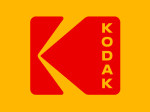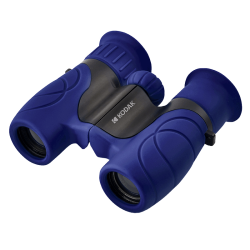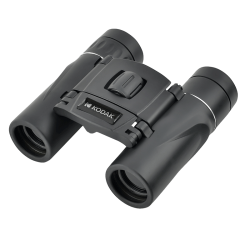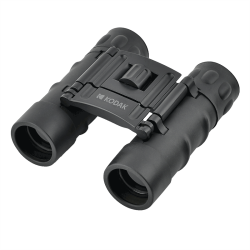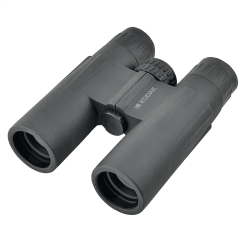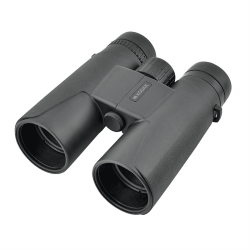How to choose a pair of binoculars ?

For birdwatching, concerts, sporting events, hunting and observing animals or landscapes during a hike: binoculars are a must-have should you wish to see distant objects clearly!
Naturally, there are many different models of binoculars: the magnification power varies, as does the accessibility, i.e. children or adults. At Kodak, we offer easy-to-access models that are suitable for all needs and undeniably perfect for outdoor enthusiasts.
To help you choose the right pair of binoculars, find out everything you need to know about this essential optical instrument for keen observers.
Binoculars: ultra-practical optical instruments!
Binoculars are very old optical instruments: in fact, a Dutch optician invented the very first telescope in 1608. His country's authorities were won over by the idea and asked him to make a version with two eyepieces, resulting in the creation of the binoculars. Society therefore moved from a monocular model to a binocular model, which was much more practical for using to observe things from afar with both eyes.
The operating principle of binoculars is quite simple: two converging lenses are placed one after the other. The first lens is the objective, which captures the light to create a focused image. The second lens is the eyepiece: it captures the image in order to magnify it. At this stage, however, the obtained image is inverted! Binoculars are fitted with a prism so that you can see the image right side up: this prism ensures that the image is the right way around and in perfect focus.
All these elements are placed in a tube: if there is only one tube, then you are using a telescope and if there are two, they become binoculars!
Understanding the technical specifications of your binoculars
When buying binoculars, there are several important numbers to look out for: at Kodak, for example, you'll find pairs of 8x21 binoculars. The first number indicates the magnification factor. The second number corresponds to the diameter of the lens. The distant object will therefore be brought 8 times closer: if you are 80 metres away, then you will be observing the object as if it were 10 metres away. Please note that the larger the diameter of the lens, the clearer the image, simply because the binoculars are able to capture more light.
A must-have for a wide range of activities
Thanks to their ability to make objects visible from afar, binoculars have been used in a wide variety of sectors throughout history: for military operations, studying birds, amateur astronomy, surveying public places, hiking, watching events and even rescue operations. The binoculars are used differently in the various fields: sun visors can be donned should the wearer not wish to draw attention and infrared devices are fitted on the models used for military purposes.
Binoculars and their various uses
Let's take a closer look at the different ways in which binoculars can be used, particularly for leisure purposes.
For travelling and hiking
When choosing the right pair of binoculars, it's important to have a clear mental picture of what you want to use them for. Many people choose binoculars for their outdoor adventures: hikers and travellers are just some examples.
In this context, binoculars are used to observe a landscape detail from afar, or an animal strolling along the mountainside. For these applications, it is best to opt for compact yet powerful binoculars. Binoculars can be heavy (due to the internal prisms), so you should always take their weight into account, most especially if you’re planning to slip a pair into your hiking or travel bag. The model must also be easy to adjust and hold; i.e. a folding function would come in handy here.
Animal watching
Whether you're hunting, birdwatching or admiring animals without disturbing their natural behaviour, binoculars are a must.
However, when observing animals, it is important to choose binoculars which boast a good contrast and wide field of view. This type of field will enable you to follow birds in flight and so on. Generally speaking, whether you are hunting or observing animals from afar, we recommend opting for a wide field of view in order to see any movements clearly. A X10 magnification is also ideal for watching animals on a hike or safari: you'll be able to achieve precision and sharpness whilst following the movement of each animal. When it comes to observing animals, you’ll undoubtedly be tempted to go for maximum magnification at all costs: however, it's all a question of balance as too much magnification can reduce image stability! The right balance is, for example, a pair of binoculars with X10 magnification and a 42 mm lens.
To whet children's curiosity
Binoculars are very useful observation tools when it comes to stimulating children's curiosity. Whether they’re on a safari, hike, observing landscape detail on a trip or simply learning how to use such optical equipment, binoculars are very popular tools amongst little ones, but they need to be adapted to their use.
Ergonomics are essential for small children: the distance between the eyecups must be adapted to your child's size and the binoculars must be easy to grasp for small hands! Children's binoculars are sturdy and may also be coated to ensure a good grip: at Kodak, for example, our children's models boast a rubber coating.
As we mentioned earlier, binoculars can be heavy: when buying a pair for little ones, please take the model’s weight into consideration! If the binoculars are too heavy, they’ll find them much harder to use.
So you don't miss any of the show!
Binoculars can also be used at a theatre, concert or even to make sure you don't miss anything at a sporting event. The idea, for this type of model, is to choose a wide field of view which will allow you to follow movements on the ground or a stage. An X8 or X10 magnification is perfect when combined with a 21 mm lens. For applications of this type, do not hesitate to opt for a compact model that can easily slip into your bag.
The different binocular specifications
When choosing binoculars, it's important to consider the various specifications listed on your model's technical data sheet.
Binocular magnification
As explained above, the magnification is indicated by the first number. When it comes to a pair of Kodak BCS400 10x25 adult binoculars, the magnification is 10: this means that if the object is 1000 metres away from you, it will appear 10 times closer in the binoculars than if you were looking at it with the naked eye. In practical terms, it's as if the animal or landscape detail were 100 metres away instead of 1000.
When choosing your magnification, there are two important points to bear in mind: a magnification of less than 5 is better suited to indoor use, while a magnification greater than X12 will require the use of a tripod to ensure good stability. At Kodak, you'll find binoculars suitable for outdoor use without a tripod, with magnifications ranging from X8 to X12.
Lens diameter
The lens diameter corresponds to the diameter of the objective lens, and is the second number found on a binocular model. The amount of light entering the binoculars depends on this diameter. Please note that the bigger the lens diameter, the better the image quality and brightness.
The prism type
In the world of binoculars, there are two types of prisms: the roof prism and the Porro prism. Porro prisms are generally associated with older binocular models, which allowed very high magnifications to be achieved, but were also very heavy. Models with a roof prism allow for much more compact and lightweight binocular designs, and this is the type of instrument we offer here at Kodak.
Additional options to consider
When choosing your binoculars, there are a few additional criteria to bear in mind.
Those who wear glasses will most definitely need to choose a suitable pair. Kodak's BCS800 10x42 adult binoculars come with sliding rubber eyecups: an interesting option for extended observation, but also easier for eyeglass wearers to adjust!
Before buying binoculars, learning about the twilight factor may also come in handy. This factor is important for assessing the binoculars' ability to reproduce images at night or in low light conditions. Binoculars with an index greater than 15 are perfect for daytime use, while those with an index greater than 25 are known as night vision binoculars.
Visual comfort should also be taken into consideration: at Kodak, for example, some models come with adjustable eyecups (which can be turned upwards or downwards). You'll also find pairs of rubber-coated binoculars for a good grip.
The Kodak binocular range
Kodak has developed a comprehensive range of binoculars designed specifically to delight outdoor enthusiasts and keen observers. This selection includes models to suit all needs, including children and adults.
Kodak BCS100 8x21 children’s binoculars
Kodak's children's binoculars are available in red and blue, and are compact enough for little hands. These lightweight and easy-to-handle binoculars (160 g) magnify distant objects by a factor of 8, whilst maintaining good image stability. This model is equipped with a 21 mm lens which allows for good light penetration, and therefore provides optimal image resolution, even in low light conditions.
The Kodak BCS100 children's binoculars boast an easy-to-reach focus wheel in the centre. Little ones can use them during their outdoor activities, to observe animals and even to get their first proper glimpses of the stars! By giving a pair of binoculars to children, you’re providing them with the opportunity to develop their curiosity and interest in nature. They’re also great at helping improve kids’ concentration, observation skills and visual acuity.
Kodak BCS400 10x25 adult binoculars
Kodak has also developed binoculars for adults: the BCS400 model shown here boasts a 10x magnification with a 25 mm-diameter lens. It's the ideal format for observing animals in a non-disruptive manner, whilst still being able to follow their movements. This pair of binoculars comes with a storage bag and strap, making it ultra-practical for excursions due to its foldable properties!
Kodak BCS600 12x32 adult binoculars
The Kodak BCS600 binoculars are ideal for birdwatching or mountain hiking: with their 12x magnification and wide 32 mm lens, they offer bright, precise and sharp image quality. This model is also equipped with coated lenses to increase light transmission and reduce the effects of reflections, resulting in clearer, higher-contrast images.
Kodak BCS800 10x42 adult binoculars
The Kodak BCS800 binoculars are top-of-the-range models that offer exceptional observation quality. The 10x magnification and 42 mm lens allow these binoculars to be used for a wide range of observational purposes. This pair is fitted with BCS800 lenses that eliminate internal reflections and chromatic aberrations. This model is also suitable for those who wear glasses, as the lenses boast rubber eyecups for improved comfort and fit.
The Kodak range of binoculars has been designed for all types of use: introducing children to observation, going on family adventures or admiring animals at the zoo; anything is possible. It’s now your turn to see which model best suits your needs and desires!
